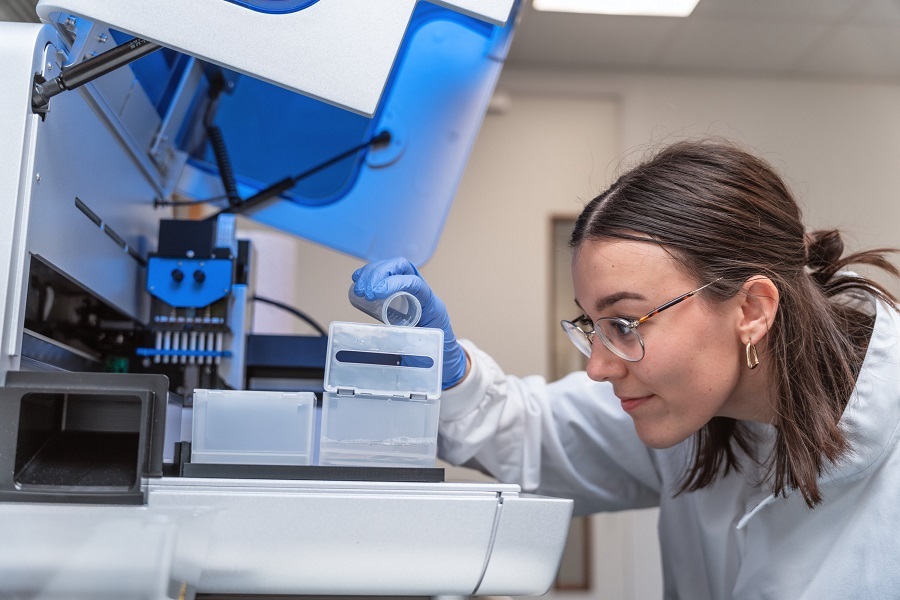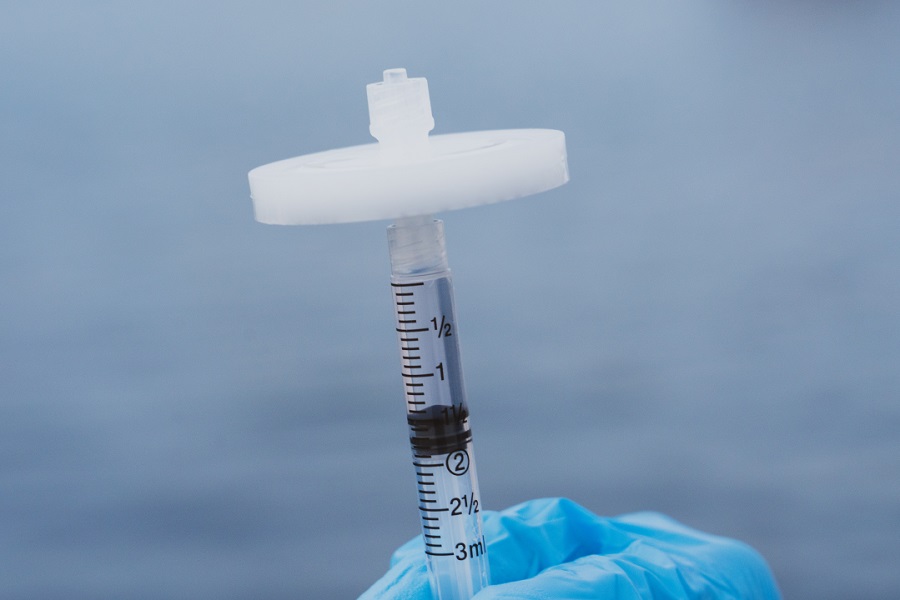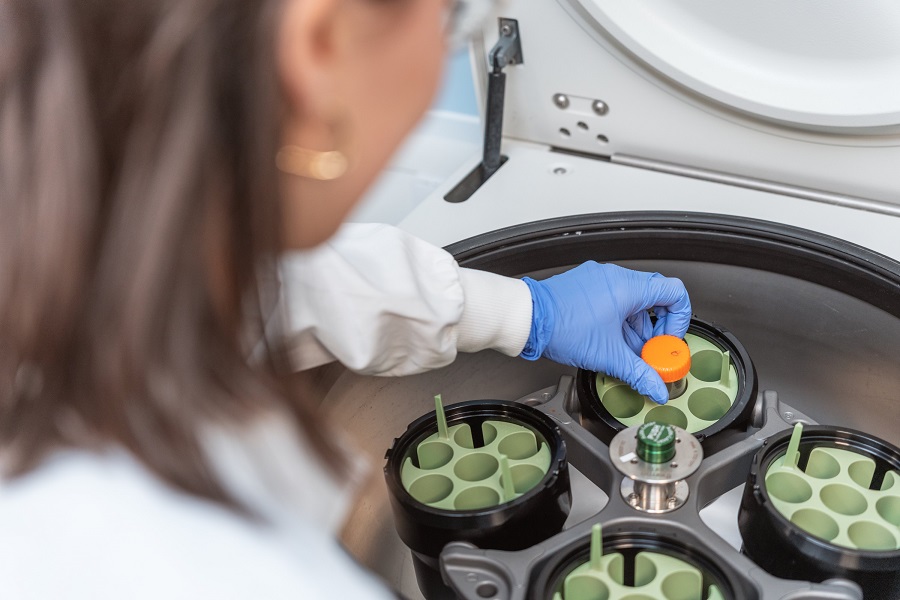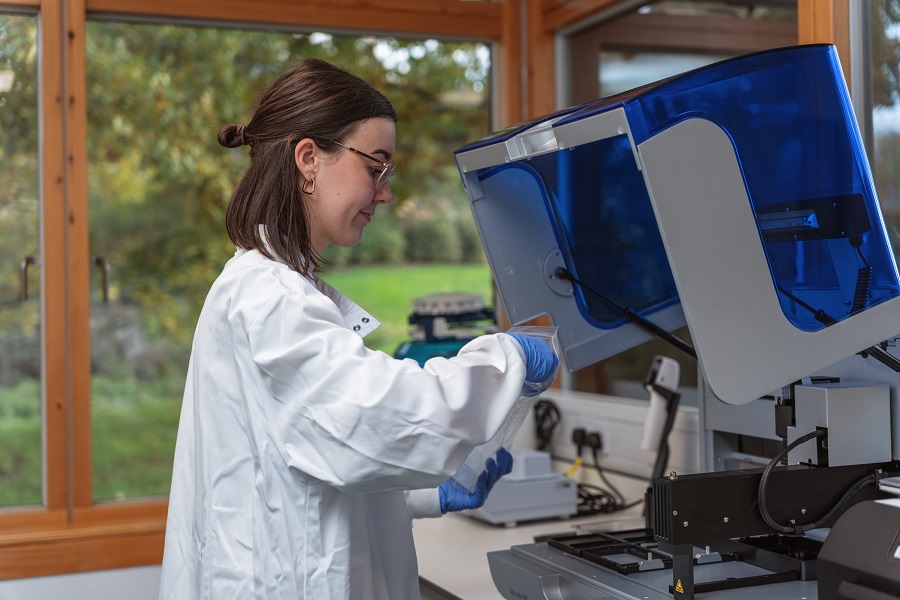
Protecting life below water
The biodiversity monitoring and environmental DNA company, NatureMetrics, uses science and deep data to help companies discover and protect species in the ocean. We interview NatureMetrics CEO, Dimple Patel, to learn more.
NatureMetrics is the global leader in nature intelligence, providing innovative monitoring of biodiversity through eDNA. This year it was nominated as a finalist in The Earthshot Prize. Its Nature Intelligence Platform, powered by eDNA, enables businesses to manage their impacts and dependencies on biodiversity at scale, converting the complexities of nature into simple insights to inform the best decisions for nature and business. They supply sampling kits, training on how to collect the samples and convert the data gathered into meaningful biodiversity metrics.
Dimple, NatureMetrics makes biodiversity measurable. Why do you believe your environmental DNA (eDNA) technology can positively impact biodiversity?
Our mission is to make biodiversity measurable at a scale, using eDNA technology that measures water (and soil) samples at precise locations. The rich data we get from even a small sample of water gives us a very complete picture of the different organisms and species present. eDNA is the perfect technology for measuring the complexity of biodiversity. It provides very, very granular data sets. When people have accurate data about biodiversity, they can make better decisions.

Deutsche Bank and NatureMetrics are partnering for a project to collect ocean water at SailGP races. What do the eDNA samples reveal?
Our project with Deutsche Bank is a fantastic example of where corporate partnership can enrich scientific discovery of ocean biodiversity. In addition to sponsoring Germany’s SailGP team, Deutsche Bank is funding eDNA collection by the team at race sites, including Bermuda. The islands of Bermuda are a key migration point for North Atlantic humpback whales.The sample found eDNA of the whales in areas much closer to shore than ever recorded before. This provides new and valuable information for the research of WhalesBermuda, a non-government organisation which is tracing over 2500 humpback whales. Deutsche Bank’s Chief Investment Office recently published this special report on our eDNA data partnership.

How does eDNA with NatureMetrics differ from traditional biodiversity monitoring?
Traditional methods for monitoring biodiversity haven’t changed in decades, like quadrat sampling, where species are literally counted by ecologists. This method can effectively generate species-level data but is expensive and time-consuming, relying on trained ecologists or naturalists. There’s also hard-to-detect species. For example, there’s much better data on birds compared with other taxonomies because they’re easier to see and hear. Earth satellite data is also a newer top-down approach and data is useful to track changes of vast areas over time. But it doesn’t yield granular data that way eDNA does.
To help companies stop biodiversity loss, we need to put the right data in the hands of the right people who will make the right decisions.
What advantages does eDNA have?
We’ve distilled the eDNA sampling process to make it simple and accessible for anyone, from children in the community to international companies. Our kits collect soil or water samples. The sample is sent for lab processing. Our eDNA lab is one of the largest in the world. Scientists analyse the eDNA and use our analytics platform to create a complete picture of life at the collection point. eDNA yields insights because it detects species not easily identifiable, including bacteria and insects. The scalable nature of eDNA makes consistent monitoring over time possible, and standardisation enables robust comparison between sites.

What has been the greatest surprise discovery with NatureMetrics’ eDNA technology?
Amazing creatures – from the North Sea to the Amazon! We’ve found a Nawal in the North Sea, pygmy hippos thought to be locally extinct, and Amazon River dolphins. Our data is creating fantastic nature insights, and these discoveries bring to life the power of our technology, as well as enrich the way we understand and interact with the world around us.
How is your eDNA technology helping corporates manage their nature impact? Can you give examples?
An example is our work with oil, gas and mining companies, whose operations have significant impact on nature. We help them monitor operations by providing high-integrity data. In one instance, our data helped identify a species that was thought to be extinct, allowing the company to put in extra conservation steps to protect it. In a separate project, we discovered a migratory species by measuring water samples for a cruise line from their cooling systems. Collecting samples along the path of their ocean route meant we could fill in a lot of data gaps, because the ocean isn’t easily accessible.

What excites you about how eDNA can be used to protect biodiversity?
One of the most exciting things about eDNA is that it’s standardised and repeatable, like satellite data. We’re currently doing really exciting things with our eDNA data sets and AI to produce actionable metrics that provide real value to decision makers.
As CEO, how are you scaling the business to meet the growing demand for biodiversity monitoring?
We provide biodiversity data that companies need, so they can fully account for their supply chains and make the right decisions for the business and community. With ecosystems under threat, there’s a growing demand for biodiversity measurement around the world. We are growing geographically, and now operate in 110 countries with more than 600 clients. We’ve started working with satellite data and also entering new partnerships such as the Nature Tech Alliance. We’re also thinking how we cater to regulation and initiatives like the Taskforce on Nature-related Financial Disclosures (TNFD) and the EU’s Corporate Sustainability Reporting Directive (CSRD).
This page was published in November 2024.
Deutsche Bank and NatureMetrics
Monitoring Ocean Biodiversity is an initiative Deutsche Bank started that brings together a number of our partners to help track ocean biodiversity in several locations around the world:
For this project we’ve connected NatureMetrics, a company that can measure biodiversity levels in seawater with SailGP Germany, an elite sailing team. We’ve also involved our friends at Whale and Dolphin Conservation (WDC), a leading charity dedicated to protecting marine mammals, who connected us with Whales Bermuda and Gotham Whale, local research groups based in Bermuda and New York respectively.

About NatureMetrics
NatureMetrics, established in 2014, is the global leader in nature intelligence, providing innovative monitoring of biodiversity through eDNA. This year it was nominated as a Finalist in The Earthshot Prize. Its Nature Intelligence Platform, powered by eDNA, enables businesses to manage their impacts and dependencies on biodiversity at scale, converting the complexities of nature into simple insights to inform the best decisions for nature and business. They supply the sampling kits, training on how to collect the samples and convert the data gathered into meaningful biodiversity metrics.

Sarah Stabler
… is based in Singapore and leads Deutsche Bank communications for the Private Bank in emerging markets. She is passionate about reducing excess consumption, promoting environmental conservation, and protecting wildlife. She is also a qualified yoga instructor.
Recommended content
Responsible Growth | Story
Fighting biodiversity loss in Malaysia Roots of change: Fighting biodiversity loss in Malaysia
How Global Peace Foundation Malaysia’s regenerative agriculture programme is improving biodiversity by interconnecting local villagers and their land.
Responsible Growth | Opinion
“We’re sawing at the branch we’re sitting on” “We’re sawing at the branch we’re sitting on”
Where to expect the greatest impetus in the fight against species extinction? Learn more from Viktoriya Brand and Markus Müller, ESG experts at Deutsche Bank.
Responsible Growth | Insights
A little goes a long way A little goes a long way
If everyone makes a small contribution to fighting biodiversity loss, we can have a great impact. Here’s how some of our employees are doing their bit to help.






